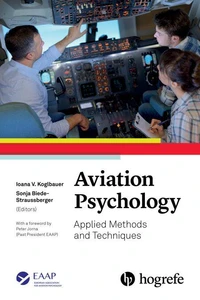Explore the critical importance of integrating the human element in aerospace
Based on cutting-edge research
Written by experts from academia and industry
Explores the use of extended reality technologies
In the face of evolving technological and societal challenges, this book delves into advanced techniques essential for integrating the human element in aerospace operations and development.
Written by experts from academia and the aerospace industry, the volume explores powerful techniques for system safety engineering, innovative design approaches for cockpits, cabins, and space vehicles, and strategies for creating effective assistance systems and implementing artificial intelligence. Chapters present methods for studying typical hazards related to human operations in space, in the air, and on the ground.
Additionally, the book explores the use of extended reality technologies (e.g., virtual, augmented, and mixed reality) to enhance operators' perceptions and explore uncharted territories in the universe. Proposals are also made for advancing industry standards and effectively integrating human and organizational factors within the aviation industry. This is an invaluable resource for practitioners, researchers and students interested in aerospace, as well as professionals from other safety critical domains (e.g., medicine, automotive, rail).
Explore the critical importance of integrating the human element in aerospace
Based on cutting-edge research
Written by experts from academia and industry
Explores the use of extended reality technologies
In the face of evolving technological and societal challenges, this book delves into advanced techniques essential for integrating the human element in aerospace operations and development.
Written by experts from academia and the aerospace industry, the volume explores powerful techniques for system safety engineering, innovative design approaches for cockpits, cabins, and space vehicles, and strategies for creating effective assistance systems and implementing artificial intelligence. Chapters present methods for studying typical hazards related to human operations in space, in the air, and on the ground.
Additionally, the book explores the use of extended reality technologies (e.g., virtual, augmented, and mixed reality) to enhance operators' perceptions and explore uncharted territories in the universe. Proposals are also made for advancing industry standards and effectively integrating human and organizational factors within the aviation industry. This is an invaluable resource for practitioners, researchers and students interested in aerospace, as well as professionals from other safety critical domains (e.g., medicine, automotive, rail).

 , qui est-ce ?
, qui est-ce ?